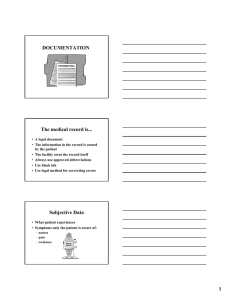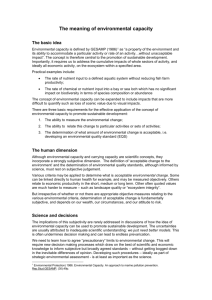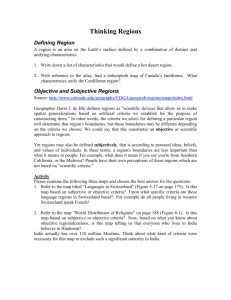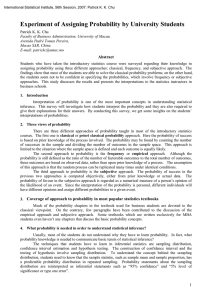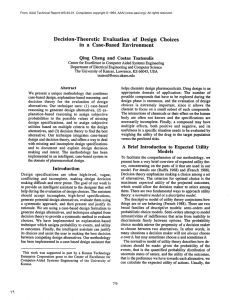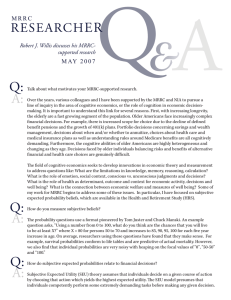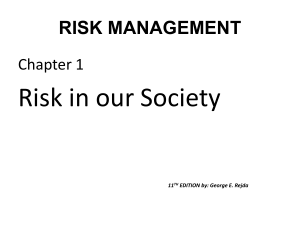MIME 6980/8980 Decision Theory
advertisement
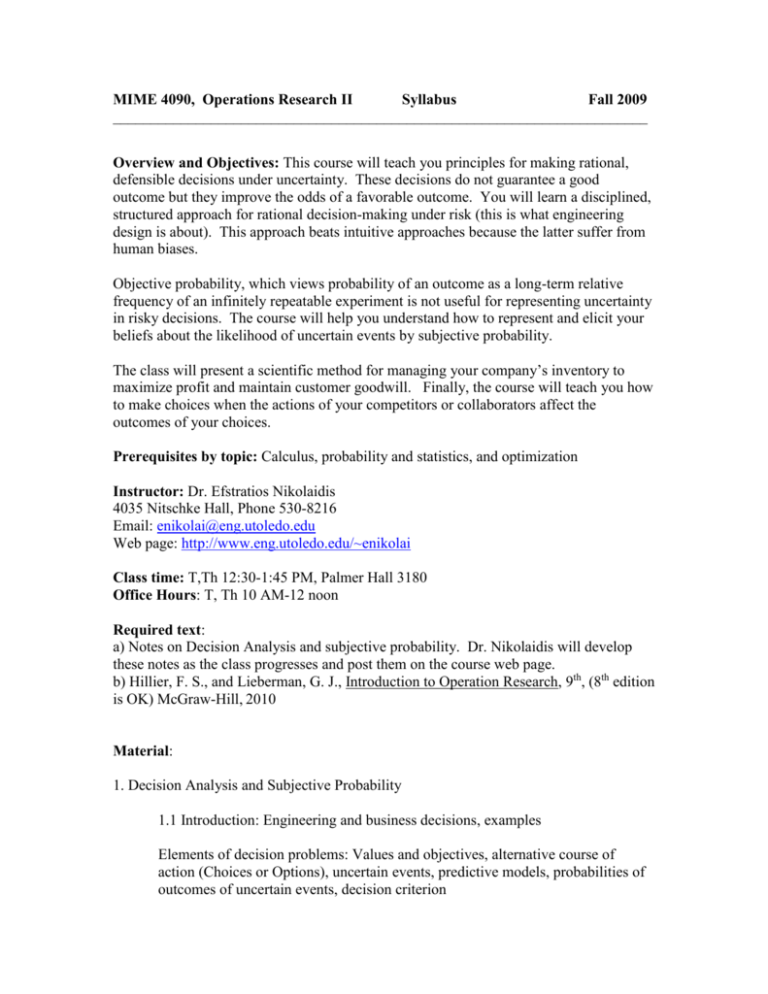
MIME 4090, Operations Research II Syllabus Fall 2009 _______________________________________________________________________ Overview and Objectives: This course will teach you principles for making rational, defensible decisions under uncertainty. These decisions do not guarantee a good outcome but they improve the odds of a favorable outcome. You will learn a disciplined, structured approach for rational decision-making under risk (this is what engineering design is about). This approach beats intuitive approaches because the latter suffer from human biases. Objective probability, which views probability of an outcome as a long-term relative frequency of an infinitely repeatable experiment is not useful for representing uncertainty in risky decisions. The course will help you understand how to represent and elicit your beliefs about the likelihood of uncertain events by subjective probability. The class will present a scientific method for managing your company’s inventory to maximize profit and maintain customer goodwill. Finally, the course will teach you how to make choices when the actions of your competitors or collaborators affect the outcomes of your choices. Prerequisites by topic: Calculus, probability and statistics, and optimization Instructor: Dr. Efstratios Nikolaidis 4035 Nitschke Hall, Phone 530-8216 Email: enikolai@eng.utoledo.edu Web page: http://www.eng.utoledo.edu/~enikolai Class time: T,Th 12:30-1:45 PM, Palmer Hall 3180 Office Hours: T, Th 10 AM-12 noon Required text: a) Notes on Decision Analysis and subjective probability. Dr. Nikolaidis will develop these notes as the class progresses and post them on the course web page. b) Hillier, F. S., and Lieberman, G. J., Introduction to Operation Research, 9th, (8th edition is OK) McGraw-Hill, 2010 Material: 1. Decision Analysis and Subjective Probability 1.1 Introduction: Engineering and business decisions, examples Elements of decision problems: Values and objectives, alternative course of action (Choices or Options), uncertain events, predictive models, probabilities of outcomes of uncertain events, decision criterion Single-Step Decisions and Sequential Decisions, planning horizon Overview of decision analysis process Requirements for a good decision 1.2 Framing and structuring decisions Framing Determine what decisions to make now and what decisions to make later, Identify the most important objectives to aim for, Select to what aspects of the decision you should pay attention and what aspects to ignore, Determine your options (alternative course of action) Fundamental vs. Means Objectives Structuring Elements in a Logical Framework Tools for Modeling Decisions Influence Diagrams Decision Trees Decision Tables Software: Tree Plan, Precision Tree 1.3 Modeling Uncertainty by Using Subjective Probability Why we need subjective probability when making risky decisions What subjective probability means and how we elicit it Why subjective probability follows same rules as objective Procedures for estimating probabilities and probability distributions from expert judgment Beware of heuristics and biases 1.4 Solving decision problems Maximum expect monetary value criterion Decisions based on existing information Decisions based on additional information from experimentation Preposterior analysis, value of additional information Sensitivity analysis of decision Sensitivity to problem parameters Sensitivity to probabilities 1.5 Modeling Preferences Motivation Attitude toward risk, risk aversion Inadequacy of expected monetary value, St. Petersburg or Bernouli paradox Max min, maximum likelihood and Max max criteria for making decisions under uncertainty: critique; Utility, Axioms of Utility, Elicitation, Paradoxes, Criticisms of Utility Conflicting Objectives, Multi attribute Utility Models 2. Inventory theory Introduction Examples Components of inventory models Deterministic continuous review models 3. Game Theory Concept of a game Description of a game Types of games Example of games Dominant strategies Iterative dominance Solution of two player’s games Nash equilibrium Min-max theorem Exams, homework and grading: There will be approximately eight homework assignments and a project. You can collaborate in the homework assignments and projects but copying another student’s homework is unacceptable. Your grade will be based on the homework (30%), project (20%) and final (50%). This will be a take-home final. Computer usage: Some homework problems can be solved efficiently using computer. You can use any software program you like including FORTRAN, MATLAB, Excel, or MathCad. Email and Web page: Homework assignments, design problems, solutions, review sessions, and exam prospectuses will be posted on the course web page or/and will be emailed electronically.

